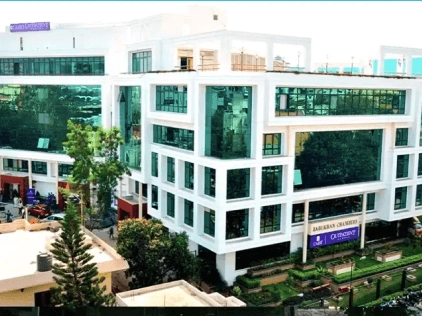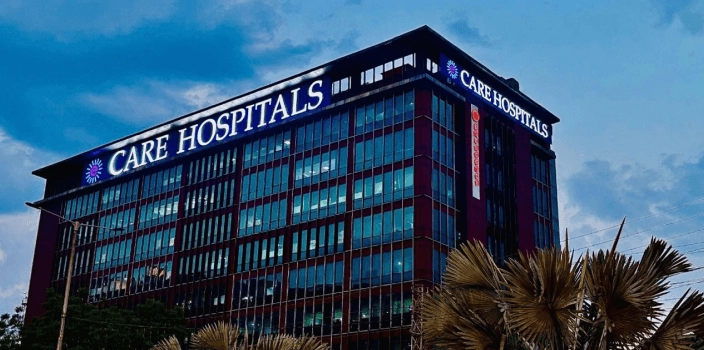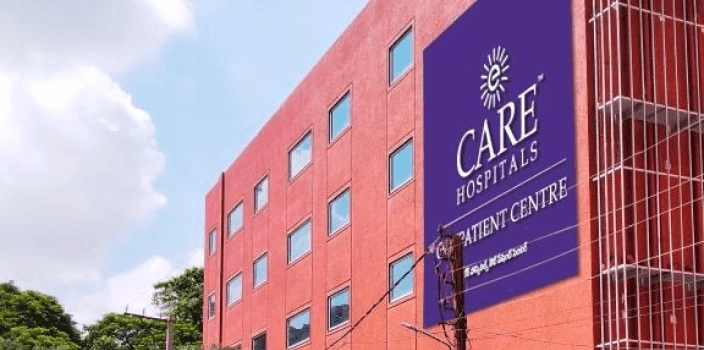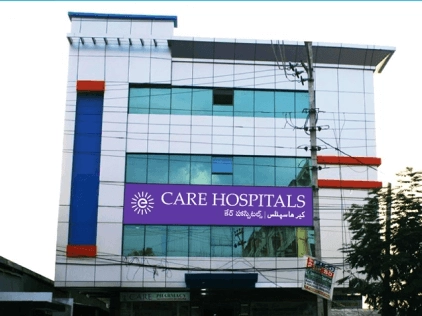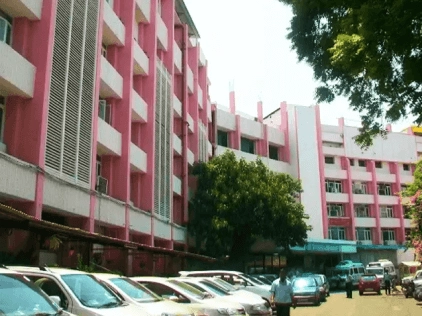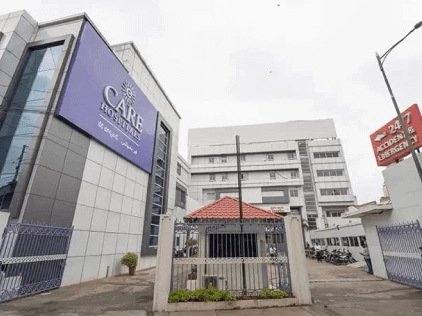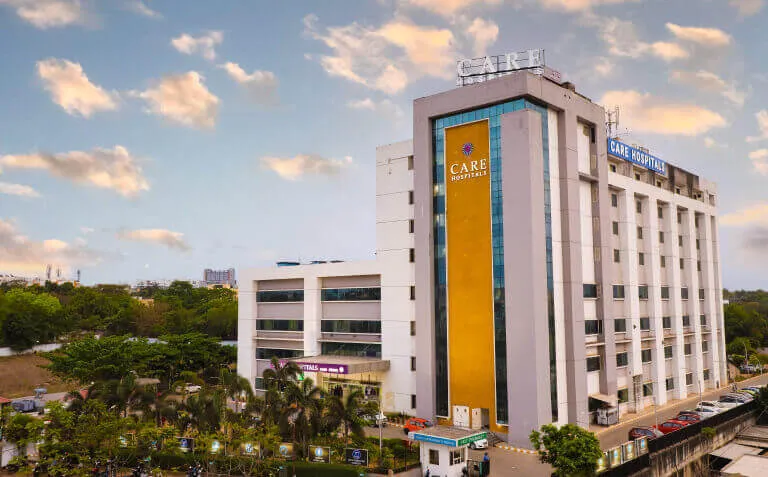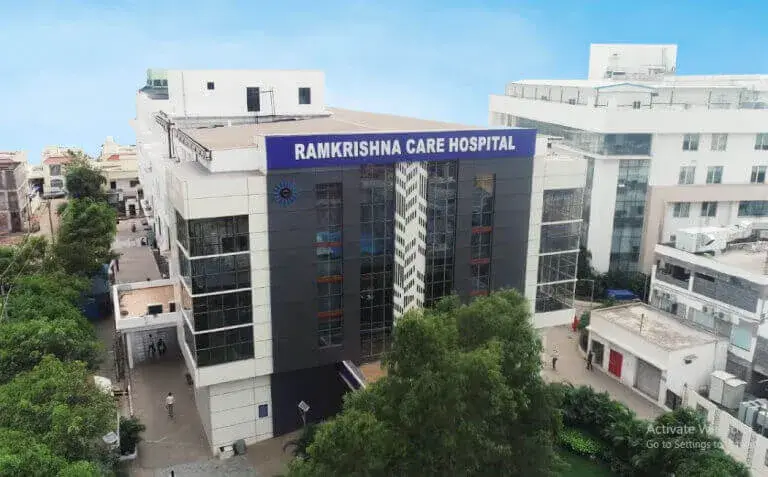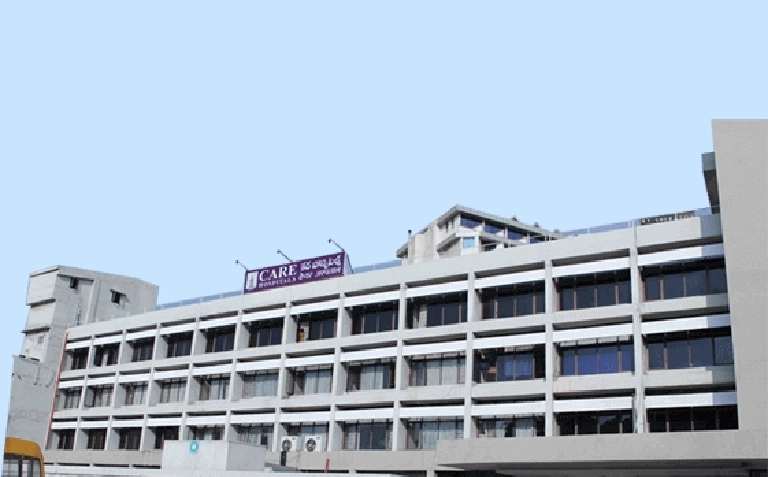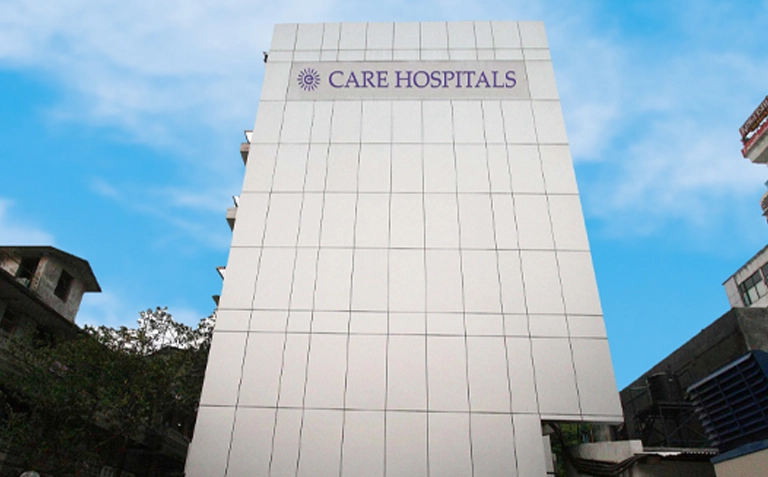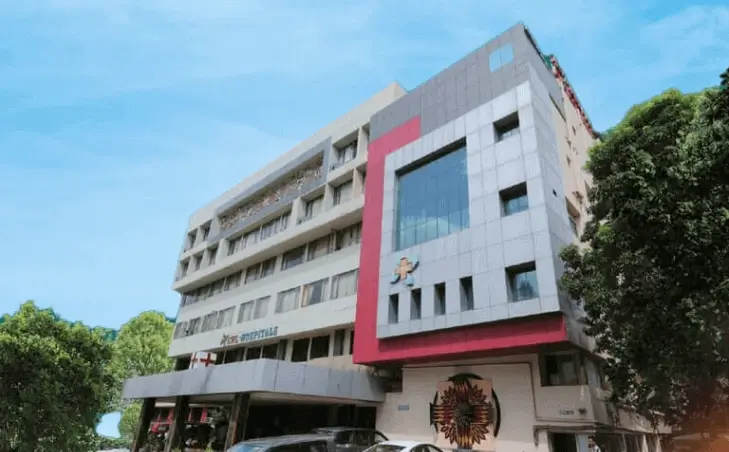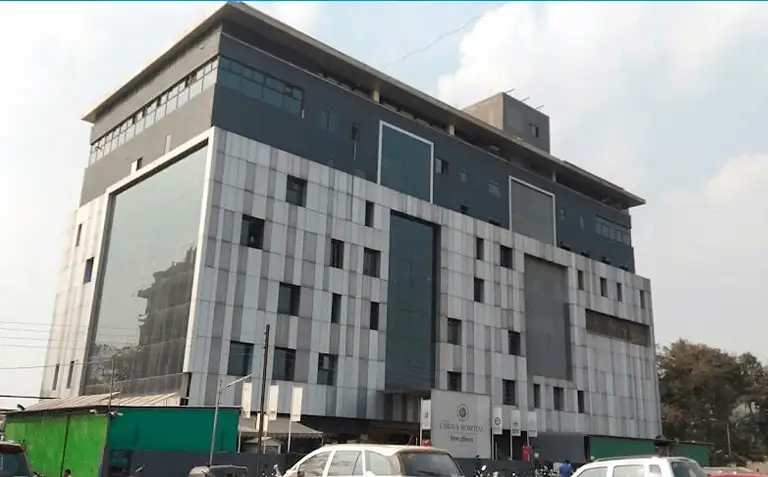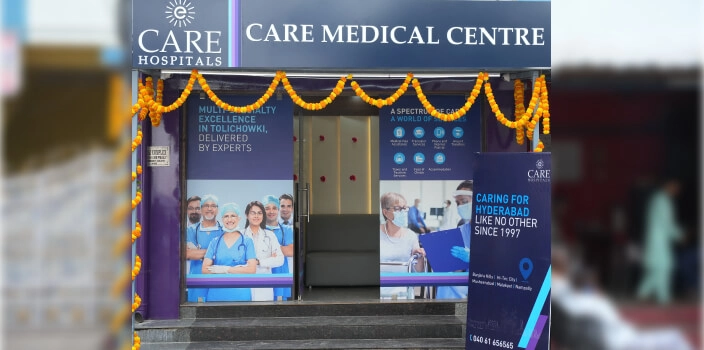Advanced Thrombectomy Surgery
Doctors use thrombectomy to remove blood clots from blood vessels. This procedure treats conditions like acute stroke, ataque del corazón, and blood clots in the lungs. Since its introduction in 1994, thrombectomy has grown into the go-to treatment for large blood vessel blockages. This article explains to you about the surgery, covering its types, how to prepare, recovery steps and possible complications.
Why CARE Group Hospitals Stands Out for Thrombectomy Surgery in Hyderabad
La Cirugía vascular department at CARE Hospitals provides care to treat a wide range of vascular problems, addressing issues with arteries, veins and the lymph system.
CARE Hospital achieves strong results in thrombectomy procedures by focusing on a few important strengths:
- Advanced Technology: The hospital has hybrid operating rooms filled with modern surgical tools and imaging systems. These include the latest intravascular ultrasound devices, high-tech endovascular stents and grafts.
- Top Surgical Team: A team of cirujanos vasculares and specialists from several departments works together to offer complete care to patients. They manage complicated cardiovascular and neurological disorders through teamwork and shared expertise.
- Minimally Invasive Techniques: Surgeons use refined invasive methods that involve smaller cuts. This approach allows patients to feel less pain and return to normal life quickly.
Best Thrombectomy Surgery Doctors in India
CARE Hospitals Pushes Boundaries with Surgical Innovations
CARE Hospital has brought huge improvements to thrombectomy treatments using modern surgical techniques. Patients now receive advanced care to remove blood clots with a focus on efficiency and precision. The hospital provides top-tier facilities to support catheter-based therapies, which use stent-retrieval methods, direct aspiration techniques or a combination of both.
The surgical team uses advanced tools designed to remove clots with accuracy. These include special guide catheters, microcatheters, stent-retrievers and systems for aspiration, along with unique high-flow aspiration devices. Such tools let surgeons work with invasive methods entering blood vessels through tiny cuts.
Different Approaches to Thrombectomy
Surgical progress has introduced three main methods to perform mechanical thrombectomy. Each one helps with removing blood clots and comes with its own benefits. These methods include the stent retriever technique, the aspiration catheter approach and a combined method where both tools work together.
Preparación previa a la cirugía
To prepare, doctors first use detailed imaging tests that pinpoint the blood clot’s location and size. These tests, which include MRI, CT scans, and ultrasound, guide the procedure. Patients scheduled for non-emergency thrombectomies have to follow:
- Dejar de fumar long before your surgery date
- Stop taking specific medicines like blood thinners a few days before the surgery
- Avoid eating or drinking anything after midnight the night before surgery
- Sign the consent forms for the operation and anaesthesia
Thrombectomy Surgical Procedure
The doctors either use anestesia general or give sedation through an IV to begin the surgery. Here is how it goes:
- The team keeps track of your vital signs the whole time
- Surgeons make a cut near the blood vessel with the clot
- Tools move through the blood vessels to get to the blockage
- They take out the clot using special methods
- They close the blood vessel to bring back normal blood flow
The timeline depends on how tricky or deep the clot is, lasting anywhere from a short time to several hours.
Recuperación postoperatoria
Recovery starts in the post-anaesthesia care unit, where medical staff keep a close watch on vital signs. The recovery routine includes steps like:
- Moving around to lower the risk of clots
- Tomando anticoagulantes
- Ropa medias de compresión
- Following an exercise plan to boost blood flow
- Doctors provide clear guidelines on these areas:
- How to manage wound care
- Following the medicine schedule
- Limiting certain activities
- Planning follow-up visits
Riesgos y complicaciones
While thrombectomy is effective, it comes with certain risks that patients need to be aware of. These risks include:
- Intracranial problems include bleeding or blocked blood flow in the brain.
- The biggest worry is symptomatic bleeding in the brain, which tends to happen within a day after the procedure.
- Problems outside the brain often come from trouble with the puncture site or the vessels used for access.
- Another big issue is vessels getting blocked again within two days after the procedure.
- Brain swelling can start or get worse after a thrombectomy.
Knowing these complications helps doctors plan ways to prevent issues and act when needed. Studies show that even with such risks, thrombectomy is still a reliable and effective option for patients who qualify.
Benefits of Thrombectomy Surgery
- Recent medical research shows huge benefits of thrombectomy surgery for treating blood clots.
- People who have this surgery often regain a better quality of life and more independence in daily tasks.
- Improvements in heart function stand out just as much.
- Physical stamina sees a noticeable boost after undergoing thrombectomy.
Insurance Coverage for Thrombectomy Surgery
Insurance policies for thrombectomy depend on the individual’s condition and situation. But for golpes y embolias pulmonares, when the surgery is required, insurance companies provide full coverage.
Second Opinion for Thrombectomy Surgery
There are certain situations where reaching out to another specialist makes sense:
- Severe cases of blood clots that need quick action
- Exploring options apart from thrombectomy to treat clots
- Checking if an individual is a good candidate for the procedure
- Failed treatment attempts
- Existing medical conditions that might influence surgery results
- Worries about how invasive the procedure might be
Conclusión
Thrombectomy is a reliable procedure that improves lives by removing blood clots. CARE Hospitals excels in performing thrombectomy offering top-notch facilities and skilled surgical teams. Their success comes from using advanced tools, less invasive techniques and prioritising patient care. They combine standard methods with cutting-edge procedures in their thorough treatment plans.
 HyderabadHospitales CARE, Banjara Hills Centro ambulatorio CARE, Banjara Hills Hospitales CARE, Ciudad HITEC Hospitales CARE, Nampally Hospitales Gurunanak CARE, Musheerabad Centro ambulatorio de hospitales CARE, HITEC City Hospitales CARE, Malakpet
HyderabadHospitales CARE, Banjara Hills Centro ambulatorio CARE, Banjara Hills Hospitales CARE, Ciudad HITEC Hospitales CARE, Nampally Hospitales Gurunanak CARE, Musheerabad Centro ambulatorio de hospitales CARE, HITEC City Hospitales CARE, Malakpet Raipur
Raipur
 Bhubaneswar
Bhubaneswar visakhapatnam
visakhapatnam
 Nagpur
Nagpur
 Indore
Indore
 Chh. Sambhajinagar
Chh. SambhajinagarClínicas y centros médicos









